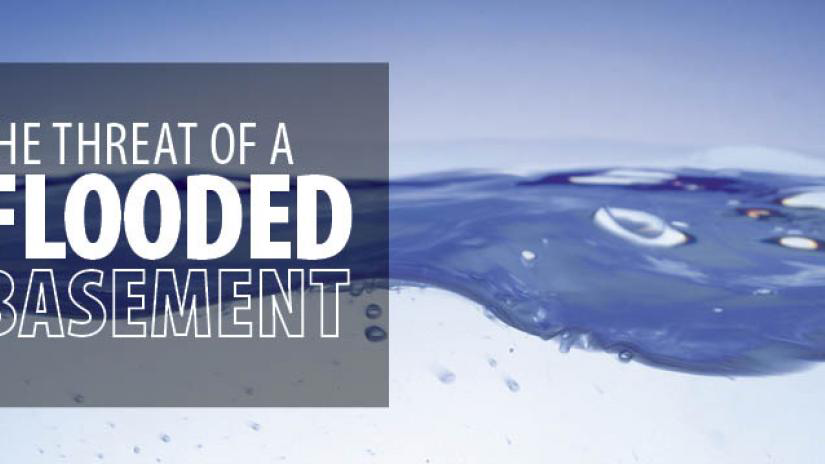
A flooded basement is every homeowner’s worst nightmare. It can happen at any time from a number of different causes. Is your basement at risk of flooding? If so, how can you prevent a flooded basement? Find the answers to your questions here.
Causes of Basement Floods
While basement flooding most often occurs during heavy rain, flash floods or rapid snowmelt in the spring, it can even occur during dry weather. Consider the following circumstances that can cause your basement to flood.
Flooding During Wet Weather
- Surface water inflow: This is the scenario most people think of when they imagine their basement flooding. Heavy rain causes a flash flood, resulting in streams of water flowing down the street and pouring in through window wells.
- Excessive groundwater around the foundation: Homes are usually built with a drainage system to safeguard against excessive groundwater. If the water table rises, the drainage system may not be adequate, allowing water to seep in through cracks and holes in the foundation.
- Sewer backup: When a sewer drain is blocked or overloaded during heavy rain, a backup can occur. If the backup rises higher than the level of your basement, wastewater may flow toward your home, entering through the lowest drain in your basement, which may include a floor drain, shower, sink or toilet.
Flooding During Dry Weather
- Failed sanitary lateral: The sanitary lateral is the pipe that connects your home’s plumbing to the main sewer line in the street. If tree roots penetrate the sanitary lateral, or the items you flush down the toilet block the sanitary sewer, a sewage backup can occur. This causes your home’s wastewater to flow up through the lowest drain in your basement and cause a flood.
- Plumbing system failure: Sometimes, basements are flooded internally from a burst pipe or corroded water heater. Frozen pipes and general lack of plumbing maintenance can lead to these failures.
Assessing Your Chances for a Flooded Basement
Everyone lives in a flood zone – it’s just a question of whether you live a low-, moderate-, or high-risk area. After all, floods have occurred in all 50 states in the past five years. Still, the areas of the country most likely to flood include:
- Central California
- The Northern Great Plains Region
- Southern Texas
- Along the Mississippi River
- Around the Great Lakes
- The New England Area
- Eastern and Southern Florida
Preventing a Flooded Basement
If you live in a high-risk flood area and your home has a basement, follow special precautions to help prevent your basement from flooding.
Take Steps Outside the House
- Seal cracks and holes in exterior walls, floors, windows, window wells and the foundation.
- Make sure downspouts drain rainwater at least six feet away from the exterior walls of your home.
- Clear gutters and downspouts of leaves and other debris that prevent proper drainage of rainwater from the roof.
- Assess the grading around your home. The ground should slope away from the foundation to help rainwater drain away naturally.
- Plant native trees and shrubs around your home to help soak up excess water.
- Install porous pavement to absorb water and melted snow.
- Find out if your home was built with a weeping tile system. Repair or replace the perforated pipe surrounding the perimeter of your foundation as the system ages.
- Ensure any shallow ditches surrounding your property are well maintained and clear of obstructions.
Take Steps Inside the House
- Have your plumbing and water heater maintained once a year.
- Set your thermostat to 60 degrees or higher at all times and leave under-sink cabinet doors open to help prevent frozen pipes.
- Know the location and condition of your sanitary lateral. Hire a professional to inspect the lateral every five to 10 years.
- Install a sump pump in the basement. Maintain it once a year and make sure your setup allows the sump pump to continue working in a power outage.
- Make an effort to avoid clogging your plumbing system. This means never pouring grease down the sink or flushing items other than tissue paper and human waste down the toilet.
For more tips to prevent a flooded basement, or for immediate assistance in the aftermath of a flood, please contact Rainbow Restoration®.
For Further Reading:
Readying a Home Against Severe Weather
Storm Series: Recovering After a Tornado Strikes
Storm Series: How To Prepare Your Home for Hurricane Season
Storm Series: What To Do After a Flash Flood
